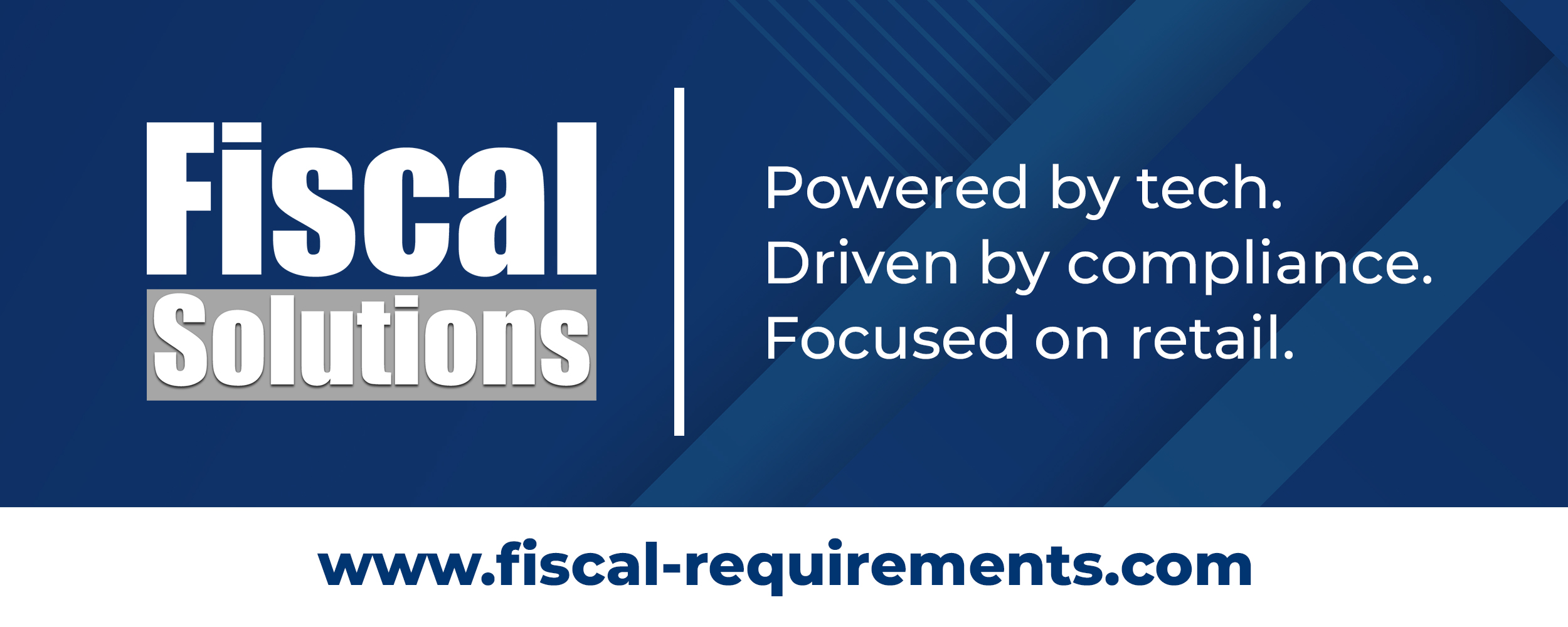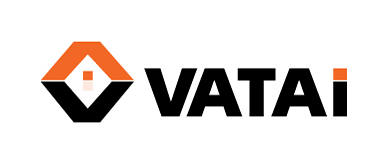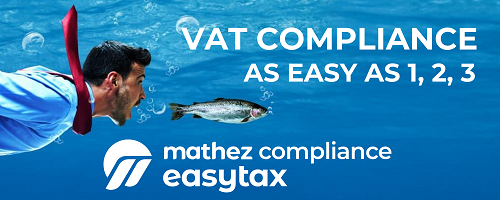The increasing digitalisation of the economy has fundamentally changed the nature of retail distribution channels for sales of goods and services/intangibles to private consumers (business-to-consumer or B2C sales). Traditionally, a consumer would make a purchase from a local store. Now their first port of call is frequently a website of that store, an online supplier in the case of digital goods, a seller based in another country or increasingly a digital platform through which many suppliers make sales.
A broad-based tax on final consumption
The overarching purpose of a VAT is to impose a broad-based tax on consumption, which is understood to mean final consumption by households. In principle only private individuals, as distinguished from businesses, engage in the consumption at which a VAT is targeted. In practice, however, many VAT systems impose VAT burden not only on consumption by private individuals but also on various entities that are involved in non-business activities.
As a broad-based tax, the VAT is distinguishable from excises targeted at specific forms of consumption such as the purchase of gasoline or alcohol. A necessary consequence of the fundamental proposition that a VAT is a tax on final consumption by households is that the burden of the VAT should not rest on businesses. This follows as a matter of elementary logic from the proposition that the VAT is a tax on household consumption, because businesses are not households and, at least as a matter of principle, are incapable of final or household consumption. In practice, if a business acquires goods, services or intangibles that are used in whole or in part for the private consumption of the business owners, VAT regimes must determine whether, or the extent to which, the purchase should be treated as acquired for business purposes or for private consumption.
The central design feature of a VAT: Staged collection process
The central design feature of a VAT, and the feature from which it derives its name, is that the tax is collected through a staged process. Each business in the supply chain takes part in the process of controlling and collecting the tax, remitting the proportion of tax corresponding to its margin, i.e. on the difference between the VAT imposed on its taxed inputs and the VAT imposed on its taxed outputs. Thus, the tax is in principle collected on the “value-added” at each stage of production and distribution.
This central design feature of the VAT, coupled with the fundamental principle that the burden of the tax should not rest on businesses, requires a mechanism for relieving businesses of the burden of the VAT they pay when they acquire goods, services, or intangibles. There are two principal approaches to implementing the staged collection process while relieving businesses of the VAT burden, thus permitting successive taxpayers to deduct the VAT they pay on their purchases while accounting for the VAT they collect on their sales. Under the invoice-credit method (which is a “transaction-based method”), each trader charges VAT at the rate specified for each supply and passes to the purchaser an invoice showing the amount of tax charged. The purchaser is, in turn, able to credit that input tax against the output tax charged on its sales, remitting the balance to the tax authorities and receiving refunds when there are excess credits. Under the subtraction method (which is an “entity based method”), the tax is levied directly on an accounts-based measure of value-added, which is determined for each business by subtracting the VAT calculated on allowable purchases from the VAT calculated on taxable supplies. Almost all jurisdictions that operate a VAT use the invoice-credit method.
VAT and international trade: The destination principle
The overarching purpose of VAT as a levy on final consumption, coupled with its central design feature of a staged collection process, lays the foundation for the core VAT principles bearing on international trade. The fundamental issue of economic policy in relation to the international application of the VAT is whether the levy should be imposed by the jurisdiction of origin or destination. Under the destination principle, tax is ultimately levied only on the final consumption that occurs within the taxing jurisdiction. Under the origin principle, the tax is levied in the various jurisdictions where the value was added. The key economic difference between the two principles is that the destination principle places all firms competing in a given jurisdiction on an even footing whereas the origin principle places consumers in different jurisdictions on an even footing.
The application of the destination principle in VAT achieves neutrality in international trade. Under the destination principle, exports are not subject to tax with refund of input taxes (that is, “free of VAT” or “zero-rated”) and imports are taxed on the same basis and at the same rates as domestic supplies. Accordingly, the total tax paid in relation to a supply is determined by the rules applicable in the jurisdiction of its consumption and all revenue accrues to the jurisdiction where the supply to the final consumer occurs.
Because of the widespread acceptance of the destination principle for applying VAT to international trade, most of the rules currently in force are generally intended to tax supplies of goods, services, and intangibles within the jurisdiction where consumption takes place. Practical means of implementing this intention are, nevertheless, diverse across jurisdictions, which can in some instances lead to double taxation or unintended non-taxation, and to uncertainties for both businesses and tax administrations.
Implementing the destination principle for international trade in services and intangibles is more difficult than for international trade in goods. The nature of services and intangibles is such that they cannot be subject to border controls in the same way as goods. Implementation of the destination principle with respect to international trade in goods is relatively straightforward in theory and generally effective in practice, due in large part to the existence of border controls or fiscal frontiers. When a transaction involves goods being moved from one jurisdiction to another, the goods are generally taxed where they are delivered. The exported goods are free of VAT in the seller’s jurisdiction (and are free of any residual VAT via successive businesses’ deductions of input tax), whilst imports are subject to the same VAT as equivalent domestic goods in the purchaser’s jurisdiction. The VAT on imports is generally collected at the same time as customs duties, although in some jurisdictions collection is postponed until declared on the importer’s next VAT return. Allowing deduction of the VAT incurred at importation in the same way as an input tax deduction on a domestic supply ensures neutrality and limits distortions in relation to international trade.
Making exports free of VAT and taxing imports introduce a breach in the staged collection process. In many VAT systems that operate an invoice credit method, the VAT on cross-border business-to-business supplies of services and intangibles is collected by the reverse charge mechanism. This is a tax mechanism that switches the liability to pay the tax from the supplier to the customer. In the absence of such a mechanism, foreign suppliers that deliver services in jurisdictions where they are not established would in principle have to register for VAT purposes and fulfill all VAT obligations in these jurisdictions. To avoid such administrative burdens on foreign suppliers, and to assure that VAT is accounted for, the reverse charge mechanism allows (or sometimes requires) the VAT registered customer to account for the tax on supplies received from foreign suppliers. If the customer is entitled to a full input tax credit in respect of the supply, it may be that local VAT legislation does not require the reverse charge to be made. However, the reverse charge mechanism is not applied in all jurisdictions and, where it is implemented, the rules may differ from country to country.
The destination principle is set out in Guideline 3.1. of the OECD International VAT/GST Guidelines (“Guidelines”), stating that “For consumption tax purposes internationally traded services and intangibles should be taxed according to the rules of the jurisdiction of consumption”.
In order to apply the destination principle to internationally traded services and intangibles, VAT systems must have mechanisms for identifying the jurisdiction of consumption by connecting such supplies to the jurisdiction where the final consumption of the services or intangibles is expected to take place. VAT systems need a place of taxation rules to implement the destination principle not only for business-to-consumer supplies, which involve final consumption but also for business-to-business supplies, even though such supplies do not involve final consumption. Business-to-business supplies are taxed under the VAT’s staged collection process, and, in this context, the place of taxation rules should facilitate the ultimate objective of the tax, which is to tax final consumption. These Guidelines set out the recommended approaches that reflect the destination principle for determining the place of taxation for business-to-consumer and business-to-business cross-border supplies of services and intangibles.
Digital trade growth and its challenges for VAT/GST collection
Global B2C e-commerce sales of goods alone are now estimated to be worth in the region of USD 2 trillion annually with projections indicating they may reach USD 4.5 trillion by 2021, USD 1 trillion of which is estimated to be cross-border e-commerce. Currently, approximately 1.6 billion consumers are buying online and this is estimated to grow to 2.2 billion consumers by 2022. While growth is slowing in mature markets, it has not yet reached saturation taking into account the scope for increasing Internet penetration in certain regions and the clear potential for increased spending together with higher value purchases as consumers gain greater confidence in using online channels.
It is mainly the growth in international online B2C trade, both in volume and in numbers of participants, which has created the most pressing challenges for VAT/GST collection. The VAT/GST on cross-border business-to-business (B2B) trade in services and intangibles, which also continues to grow, is generally collected through a reverse charge or self-assessment mechanism, as recommended by the Guidelines. These self-assessment mechanisms generally work well in a B2B context – however, they are largely ineffectual in a B2C context and this is becoming more and more relevant in light of the exploding B2C online trade.
The main VAT/GST challenges related to the digital economy that were identified in the 2015 BEPS Action 1 Report are (i) imports of low-value parcels from online sales which are treated as VAT/GST exempt in many jurisdictions, and (ii) the strong growth in the trade of services and intangibles, particularly sales to private consumers, on which often no or an inappropriately low amount of VAT/GST is levied due to the complexity of enforcing VAT/GST payment on such supplies.
Recommended approaches for addressing the key challenge of collecting the VAT/GST on the sales of digital products to private consumers by foreign suppliers are presented in the Guidelines and in the 2015 BEPS Action 1 Report. In considering and implementing these recommended approaches, countries are increasingly examining the role that digital platforms can play in the collection of the VAT/GST. Several jurisdictions have already introduced or have signaled the introduction of measures involving the digital platform in the VAT/GST collection on sales of digital services via platforms. A key reasoning behind this approach is that the platform is viewed as taking the role of a ‘store’ with an offering of different supplies such as digital supplies of music, films, books, games and software applications, and in many cases act as the sole point of contact with the end consumer including in respect of service delivery. Importantly, it is also seen as an efficient and effective means for collecting the VAT/GST which has had largely positive results.
A Full VAT/GST liability regime
As presented by the OECD on its Report in June 2019 (which was submitted to the tax authorities and international organizations that were invited to the 5th Global Forum on VAT meeting in March 2019), under the full VAT/GST liability regime, the digital platform is designated by law as the supplier for VAT/GST liability purposes. Under this regime, the digital platform is solely and fully liable for assessing, collecting and remitting the VAT/GST on the online sales that go through the platform, to the tax authorities in the jurisdiction of taxation, in line with the VAT/GST legislation of that jurisdiction. This liability regime is limited to VAT/GST obligations only. It does not deal with any other liability aspects for digital platforms beyond VAT/GST, such as for instance product liability.
- Assume that a supplier (hereafter the underlying supplier) makes an online sale through a digital platform to a customer in the jurisdiction of taxation.
- Under the full VAT/GST liability regime for digital platforms, the digital platform through which the sale was carried out is fully and solely liable for the VAT/GST with respect to the sale (hereafter the underlying sale), in accordance with the full liability regime in the jurisdiction of taxation. This regime defines the conditions for the application of this regime, including the type of involvement of the digital platform in the underlying sale that triggers the application of this regime. The basic mechanics for the collection and payment of the VAT/GST under this regime are as follows:
- The digital platform assumes full VAT/GST liability as if it has effected the underlying sale to the customer itself. Tax authorities may wish, however, to consider limiting the VAT/GST liability risk under this regime for digital platforms that they consider to have acted in good faith and to have made reasonable efforts to ensure compliance;
- The underlying supplier is in principle relieved from any VAT/GST liability on the supply to the customer, to avoid double taxation. Tax authorities may wish, however, to safeguard the possibility to claim the VAT/GST on the underlying sale from the underlying supplier, notably in cases of fraudulent behaviour of the underlying supplier and as a means to limit compliance risks for platforms that have acted in good faith and have made reasonable efforts to ensure compliance;
- In order to avoid a break in the staged collection chain, the full VAT/GST liability regime may treat the digital platform as having received the supply from the underlying supplier and having supplied it onwards to the customer in the jurisdiction of taxation. Each of these supplies is then subject to the appropriate VAT/GST rules, including invoicing and reporting requirements. Such an approach allows the underlying supplier and the digital platform to process the sale for VAT/GST purposes, incl. the deduction of the associated input VAT/GST by the underlying supplier and the entry of an input transaction that corresponds to the output transaction into the digital platform’s VAT/GST accounts;
- It is recognised that an approach whereby the digital platform is deemed to have received the supply from the underlying supplier and to have supplied it onwards to the customer, may in certain cases20 entail cash flow costs for digital platforms (from having to pay VAT/GST to the underlying supplier) and revenue risks for tax authorities (i.e. the risk of generating recoverable VAT/GST for digital platforms that needs to be collected from underlying suppliers). Tax authorities may, therefore, wish to consider treating the supply by the underlying supplier as zero-rated; or to implement a reverse-charge regime where this is compatible with the domestic VAT/GST rules. Alternatively, tax authorities could also consider disregarding the supply by the underlying supplier for VAT/GST purposes and only focus on the deemed supply by the digital platform to the customer. It is recognised, however, that deviations from normal VAT/GST rules may themselves also create complexity for compliance and administration. Disregarding the supply by the underlying supplier for VAT/GST purposes could, for instance, create complexity in respect of the supplier’s right to deduct the associated VAT/GST. The operation of rules that deviate from normal VAT/GST operation could also create complexity in a cross-border context, e.g. where one jurisdiction disregards the supply by the underlying supplier for VAT/GST purposes while the other requires the application of the normal rules in accordance with the staged collection process;
- Each of these supplies is supported by the appropriate documentation covering the The Guidelines recommend the simplified registration and collection regime as a solution for the effective collection of VAT on B2C supplies of services and intangibles by a supplier that is not located in the jurisdiction of taxation. This presumes, of course, that this jurisdiction has the taxing rights over these supplies in accordance with the Guidelines for determining the place of taxation (chapter 3 of the Guidelines) and that this jurisdiction decides to exercise these taxing rights. The Guidelines observe that the reverse charge mechanism, which is the recommended solution for B2B supplies of services and intangibles by foreign suppliers, does not offer an effective solution for collecting VAT on B2C supplies. full value chain for VAT/GST auditing purposes in accordance with the full liability regime in the jurisdiction of taxation. Jurisdictions are encouraged to put in place, as appropriate, simplified documentation and reporting requirements. The principles and guidelines as set out in the report on the Mechanisms for the Effective Collection of VAT/GST (the “Collection Mechanisms Report”) also apply in principle to the fulfillment of a digital platform’s VAT/GST liability under the full liability regime.
Cross-border B2C supplies of services and intangibles.
The Guidelines recommend the simplified registration and collection regime as a solution for the effective collection of VAT on B2C supplies of services and intangibles by a supplier that is not located in the jurisdiction of taxation. This presumes, of course, that this jurisdiction has the taxing rights over these supplies in accordance with the Guidelines for determining the place of taxation (chapter 3 of the Guidelines) and that this jurisdiction decides to exercise these taxing rights. The Guidelines observe that the reverse charge mechanism, which is the recommended solution for B2B supplies of services and intangibles by foreign suppliers, does not offer an effective solution for collecting VAT on B2C supplies.
Simplified registration and collection regime
The Guidelines also recommend that such a simplified registration and collection regime operate separately from the traditional registration and collection regime, without the same rights (e.g. input tax recovery) and obligations (e.g. full reporting) as a traditional regime. Jurisdictions that decide to implement such a simplified regime that operates separately from the traditional regime will need to determine the scope of this simplified regime, i.e. it must determine the categories of supplies for which VAT will be remitted under the simplified regime as distinguished from the other categories for which the traditional regime would continue to apply.
B2C supplies of services and intangibles by foreign suppliers in scope
The Guidelines do not limit the potential scope of the simplified registration and collection regime. Such a regime could be used to collect VAT on any type of B2C supply of services and intangibles by a foreign supplier, no matter on what basis (or “proxy”) the taxing rights are allocated to the jurisdiction of taxation. The simplified registration and collection regime could thus be used to collect the VAT on any type of B2C supplies by suppliers that are not located in the taxing jurisdiction and for which this jurisdiction has acquired the taxing rights on the basis of any of the place of taxation rules recommended by the Guidelines i.e.:
- Guideline 3.5: for supplies that are subject to taxation in the jurisdiction where they are physically performed (e.g. sale of a theatre ticket by a supplier who is not located in the jurisdiction where the theatre performance takes place):
“For the application of Guideline 3.1, the jurisdiction in which the supply is physically performed has the taxing rights over business-to-consumer supplies of services and intangibles that are physically performed at a readily identifiable place, and are ordinarily consumed at the same time as and at the same place where they are physically performed, and ordinarily require the physical presence of the person performing the supply and the person consuming the service or intangible at the same time and place where the supply of such a service or intangible is physically performed”.
- Guideline 3.6: for supplies that are taxed in the jurisdiction where the customer has its usual residence (e.g. movie downloads):
“For the application of Guideline 3.1, the jurisdiction in which the supply is physically performed has the taxing rights over business-to-consumer supplies of services and intangibles that are physically performed at a readily identifiable place, and are ordinarily consumed at the same time as and at the same place where they are physically performed, and ordinarily require the physical presence of the person performing the supply and the person consuming the service or intangible at the same time and place where the supply of such a service or intangible is physically performed”.
- Guideline 3.7: for supplies that are subject to a “specific” rule for determining the place of taxation:
“The taxing rights over internationally traded services or intangibles supplied between businesses may be allocated by reference to a proxy other than the customer’s location as laid down in Guideline 3.2, when both the following conditions are met: The allocation of taxing rights by reference to the customer’s location does not lead to an appropriate result when considered under the following criteria: Neutrality Efficiency of compliance and administration Certainty and simplicity Effectiveness Fairness. A proxy other than the customer’s location would lead to a significantly better result when considered under the same criteria. Similarly, the taxing rights over internationally traded business-toconsumer supplies of services or intangibles may be allocated by reference to a proxy other than the place of performance as laid down in Guideline 3.5 and the usual residence of the customer as laid down in Guideline 3.6, when both the conditions are met as set out in a. and b. above”.
- Guideline 3.8: for supplies that are taxed in the jurisdiction where the immovable property is located (e.g. services directly connected with immovable property supplied by a foreign supplier):
“For internationally traded supplies of services and intangibles directly connected with immovable property, the taxing rights may be allocated to the jurisdiction where the immovable property is located”.
The main common feature of the foregoing supplies is that the supplier is not located in the jurisdiction of taxation. The simplified registration and collection regime can provide an efficient and effective solution for collecting the VAT on B2C supplies of services and intangibles by such a foreign supplier. Facilitating compliance for these foreign suppliers is expected to stimulate compliance, thus securing VAT revenue and minimising competitive distortions between domestic and foreign suppliers.
An advantage of such a broad approach is that it reduces risks of uncertainty, complexity and possible disputes that might result from implementing different tax treatments for different categories or types of supplies. It reduces definitional questions (no need to define what is in and what is out of scope); it reduces the need to revise the rules whenever new types of supplies emerge and is therefore likely to be more future proof than a limited approach; and it is likely to ensure greater consistency in the tax treatment of similar types of supplies. Overall, a broad approach is therefore likely to reduce complexity and uncertainty for suppliers as well as for tax administrations.
On the other hand, tax authorities may wish to choose an approach whereby simplification measures are implemented only for those areas where there is a need for such measures. They may thus wish to avoid reforms, and changes for both suppliers and the tax administration, which may affect areas for which there is no compelling need for change. In the end, it is for the tax authorities to carefully balance both considerations: the potential advantage of implementing a broad approach in minimising uncertainty with regard to the scope of a simplified regime and minimising risks of uneven treatment between supplies that are in and out of scope; and the potential disadvantage of opening the simplification for supplies and/or suppliers where there is no need to deviate from the traditional registration and collection regime.
Scope limited to specific type(s) of B2C supplies of services and intangibles
A number of jurisdictions have chosen to limit the scope of their simplified registration and collection regime to what can broadly be described as digital B2C supplies by foreign businesses. These typically include the following categories of supplies: digital content purchases (downloads of e-books, videos, apps, games, music); subscription based supplies of content (news, music, streaming of video, online gaming); supplies of software services and maintenance (anti-virus software, digital data storage, etc.); licensing of content (e.g. access to specialised online content such as publications and journals, software, cloud-based systems, etc.); and telecommunication and broadcasting services. Such an approach may be motivated by the objective to ensure the effective collection of VAT on B2C supplies in sectors where the risk of competitive distortion between domestic and foreign suppliers is considered most acute and/or where tax revenue is considered to be most at risk.
A distinct tax treatment of supplies depending on their classification (e.g. digital supplies vs. nondigital) is likely to create classification challenges for both tax authorities and suppliers. This is particularly challenging in a digital environment, which is in constant evolution and is characterised by constant innovation leading to continuous changes in business and delivery models and the emergence of new business sectors and new types of services. In such an environment, it is often challenging for a non-expert to understand the key characteristics of a supply and to classify it for VAT purposes as being in or out of the intended scope of the simplified registration and collection regime (e.g. whether or not it is digital). It also requires tax authorities to constantly monitor the digital market evolutions, to ensure that the existing classifications remain updated. The failure to do so may result in revenue losses (as new types of supplies may not be captured) and competitive distortions. This may result in arbitrary distinctions in tax treatment between supplies that may in practice be similar or identical (e.g. whether or not a phone call is carried out over the internet; there may be instances where a supplier or the tax administration cannot even know by which means the call is carried out). These classification challenges are likely to become increasingly difficult for suppliers to manage, as more tax authorities implement simplified registration and collection regimes and different classifications and definitions are implemented across jurisdictions. This would most likely have a negative effect on compliance levels as a result of misclassification and growing complexity confronting suppliers with VAT obligations in multiple jurisdictions in a globalised digital economy.
A separate issue that may arise under a targeted approach is that a one-off supply that is not covered by the simplified registration and collection regime by a supplier that is registered under such a regime may result in an additional obligation for this supplier to register under the traditional regime. This could be addressed by offering the foreign supplier the flexibility to choose to declare such a supply under the simplified regime, under certain conditions (e.g. up to a certain amount). Such flexibility should be carefully considered so as to ensure a proper balance between simplification and the needs of tax administrations to safeguard the revenue through a manageable process.















